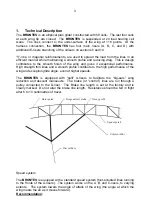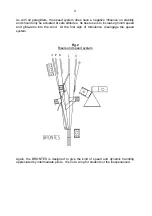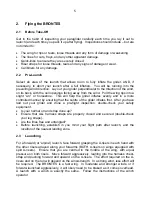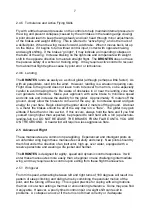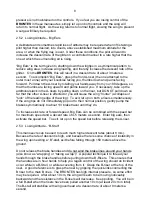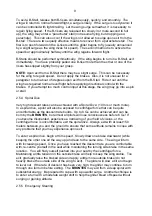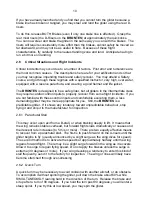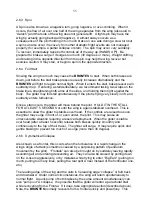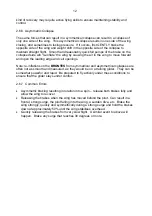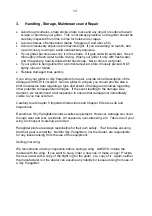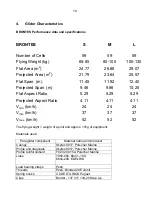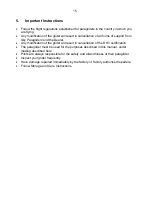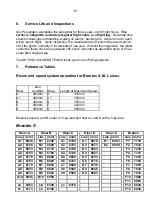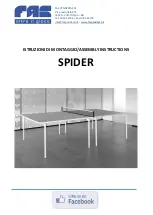
8
pressure is not maintained on the controls. If you feel you are losing control of the
BRONTES
in these manoeuvres, simply let up on both controls and the wing will
return to normal flight. As the wing returns to normal flight, slowing the wing to prevent
a surge will likely be required.
2.5.2 Losing Altitude – Big Ears
A deliberate and sometimes rapid loss of altitude may be required when lift is taking a
pilot higher than desired, into clouds, above established maximum altitude for the
area, or when the flying day is over. Under these conditions, the pilot will want to
increase the descent rate of the glider in a controlled manner to a rate higher that the
one at which the surrounding air is rising.
“Big Ears“ is the term given to shutting down the wingtips in a symmetrical pattern to
reduce wing area, increase wing loading, and thereby increase the descent rate of the
glider. On the
BRONTES
, this will result in a descent rate of about 3 meters a
second. To accomplish “Big Ears“, grasp the front A-riser (the one attached to the
outer most a line) with your knuckles facing you, thumbs down and palms facing
forward. Pull down the A-riser by rotating your hands away from you 180 degrees, so
that the thumbs are facing upward and palms toward you. If necessary, take up the
additional slack in the A-risers by pulling down on the riser, but DO NOT pull down so
far that the other A-riser is effected or you will cause the wing “frontal“ (a collapse or
“tuck“ of the leading edge of the wing). To exit, let up on both a risers simultaneously.
If the wing tips do not immediately pop out to their normal position, gently pump the
brakes symmetrically to about 1/3 brake travel until they do.
To increase sink rate or forward speed, Big Ears can be combined with the speed bar
for maximum speed and a decent rate of 4-5 meters a second. Enter big ears, then
activate the speed bar. To exit, let up on the speed bar before releasing the A-riser.
2.5.3 Losing Altitude - “B-Stall“
This manoeuvre can be used to reach much higher descent rates (about 8 m/s).
Because the rate of descent is high, and because there is some chance of instability in
the wing upon exiting a “B”-stall, exit before falling through 150 meters above the
ground.
Do not release the brake handles
and do not wind the brake lines around your hands
(also know as “wrapping” or “taking a wrap”)! A popular technique it to thread your
hands through the brake handles before pulling down the B-Risers. This ensures that
the handles are in hour hands to help you regain control of the wing should an incident
occur while in a B-Stall, or while recovering from it. Grasp the B-riser at the top of the
riser. A good reference is to grasp the riser by gripping the quick-links connecting the
B riser to the main B lines. The BRONTES has high internal pressure, so some effort
may be required. After about 10 cm, the wing will seem to be moving noticeably
backward and the resistance in the B-risers will decrease. Keep pulling. You will be in
a full B-stall when the risers have been pulled another 10 cm (at least 20 cm in total).
The B-stall will stabilise with wing overhead at a descent rate of about 8 meters a
second.
Содержание BRONTES
Страница 18: ...18 ...



